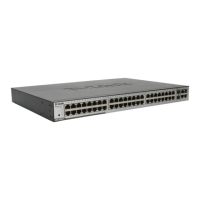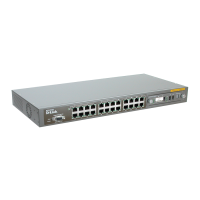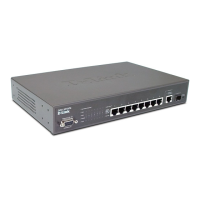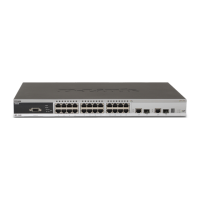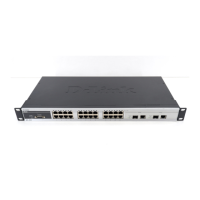D-Link DES-3326S Layer 3 Switch CLI Reference
14
QOS COMMANDS
The DES-3326S Switch supports 802.1p priority queuing. The Switch has 4 priority queues. These priority
queues are numbered from 0 (Class 0) — the lowest priority queue — to 3 (Class 3) — the highest priority
queue. The eight priority queues specified in IEEE 802.1p (p0 to p7) are mapped to the Switch’s priority queues
as follows:
• p1 and p2 are assigned to the Switch’s Class 0 queue.
• p0 and p3 are assigned to the Switch’s Class 1 queue.
• p4 and p5 are assigned to the Switch’s Class 2 queue.
• p6 and p7 are assigned to the Switch’s Class 3 queue.
Priority scheduling is implemented using two types of methods, strict priority and round-robin priority. If no
changes are made to the QoS priority scheduling settings the method used is strict priority.
For strict priority-based scheduling, packets residing in the higher priority queues are transmitted first. Only
when these queues are empty, are packets of lower priority allowed to be transmitted. Higher priority packets
always receive preference regardless of the amount of lower priority packets in the buffer and regardless of the
time elapsed since any lower priority packets have been transmitted. By default the Switch is configured to
empty the buffer using strict priority.
NOTICE: The default QoS scheduling arrangement is a strict priority schedule.
To customize scheduling to set up round-robin queue clearing, the MAX.
Latency and MAX. Packets values need to be changed using the config
scheduling command. See config scheduling below.
To implement round-robin (weighted) priority, the Switch’s four priority queues can be configured to reduce the
buffer in a round-robin fashion - beginning with the highest priority queue, and proceeding to the lowest priority
queue before returning to the highest priority queue.
The weighted-priority based scheduling alleviates the main disadvantage of strict priority-based scheduling − in
that lower priority queues get starved of bandwidth − by providing a minimum bandwidth to all queues for
transmission. This is accomplished by configuring the maximum number of packets allowed to be transmitted
from a given priority queue and the maximum amount of time a given priority queue will have to wait before
being allowed to transmit its accumulated packets. This establishes a Class of Service (CoS) for each of the
Switch’s four hardware priority queues.
The possible range for maximum packets is: 0 to 255 packets.
The possible range for maximum latency is: 0 to 255 (in increments of 16 microseconds each).
113
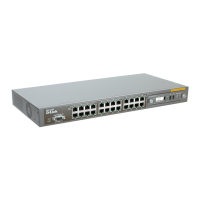
